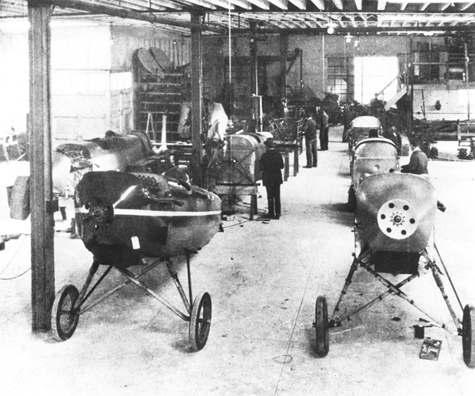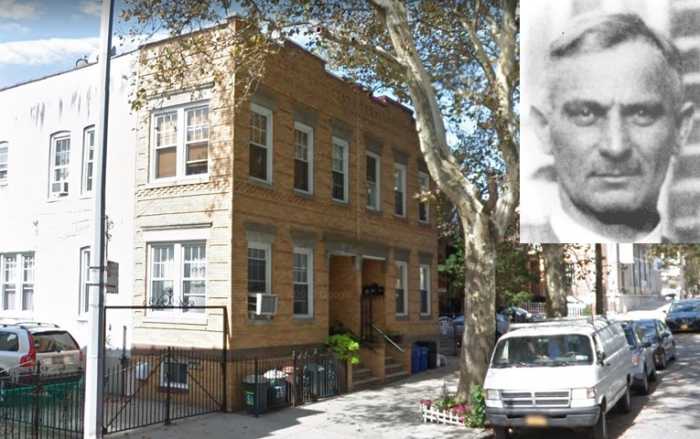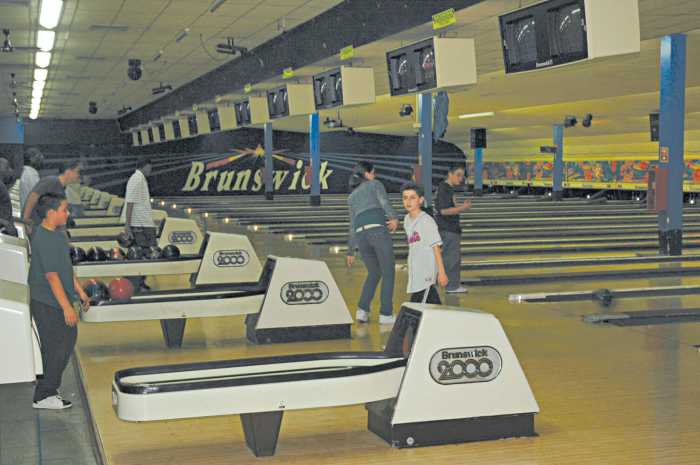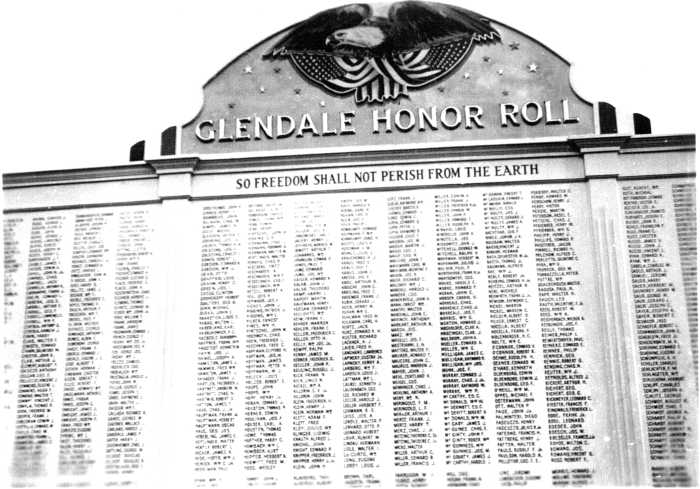Previously located off the intersection of Cooper Avenue and 79th Place in Glendale, the Brunner Winkle Aircraft Corporation produced Bird biplanes during the late 1920s to early 1930s.
The company began on Long Island as the Royal Aircraft Corporation in 1926 and relocated to Glendale, under new management and with a new name, two years later.
It had etched itself in aviation history by that time, as it produced a biplane model that Charles Lindbergh used in preparation for his historic, trans-Atlantic flight in 1927. He also used this particular aircraft to teach his wife, Anne, how to fly.
Taking off
Brunner Winkle Aircraft Corp. was incorporated in New York State in May 1928, with William E. Winkle, president; J.J. Finkel, vice president; Joseph E. Brunner, treasurer; and August Brunner, secretary. They rented space in the former Our Darling Match Factory at 72-34 Charlotte Pl. (now 60th Lane) in Glendale.
Michael Gregor was the chief engineer and designer. The Brunner brothers operated an automobile garage on Metropolitan Avenue in Middle Village and later had a Buick agency. Winkle, born in Ridgewood in 1894, was a pilot in World War I and second lieutenant in the U.S. Army Aviation Branch. His father operated an auto service station and tire shop on Cooper Avenue near Cypress Avenue.
In the fall of 1928, the company moved to larger quarters, renting 16,000 square feet at 1-17 Haverkamp St. (now 71st Avenue) in Glendale, which was on the north side of the Long Island Rail Road opposite Ford Avenue (now 79th Place).
The company stated that they planned on building five planes by June 30, 1929, and a total of 15 by Sept. 30, 1929. The aircraft industry in the U.S. at the time was made up of about 600 small companies.
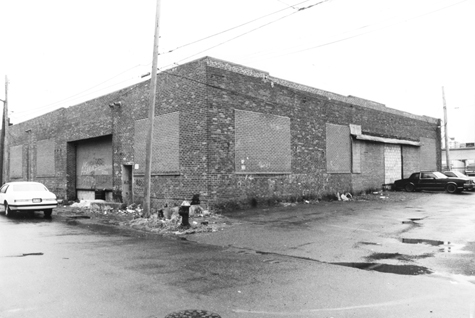
Bird was the word
The first plane that the company built was the Model A “Bird,” a conventional, three-seat commercial bi-plane with two open cockpits. It was propeller-driven and powered by a Curtiss OX-5 90 horsepower water-cooled, five-cylinder radial engine originally designed for World War I aircraft.
The Model A Bird was priced at $3,150 (equal to $43,814.84 today), had a cruising speed of 80 mph and could fly for eight hours (640 miles) at 16 miles to the gallon. It had a ceiling of 18,000 feet and a top speed of 105 mph. The first nine Model A planes produced did not qualify for the FAA’s full Approved Type Certificate (ATC) and instead were issued memorandum certificates.
In September 1929, the FAA issued to Brunner-Winkle Aircraft Corp. an ATC for the new model Bird known as the BK. It was powered by a five cylinder, air-cooled radial engine, the Kinner K-5, built by Kinner Airplane and Motor Corp. of Glendale, Calif. It was a 100 horsepower engine. The Model B-K, priced at $3,895 (equal to $54,177.40 today), had a top speed of 115 mph. About 75 were built.
The company, however, continued to build the Model A until their supply of Curtiss Ox-5 engines was exhausted. They built about 85 Model As.
We would be remiss if we didn’t note that Bird planes were, to the best of our knowledge, not tested in Glendale. They were shipped east for test flights via rail to Roosevelt Field—then an airport—where Brunner-Winkle owned a hangar.
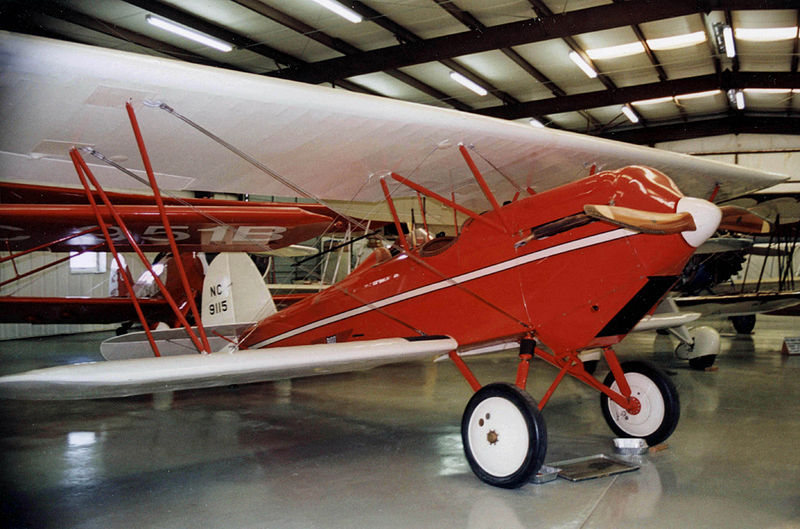
The rest of the story
The Depression took its toll on the Brunner-Winkle Aircraft Corp., and in 1931, the name of the company was changed to The Bird Aircraft Corp. The Brunner brothers dropped out of management.
Bird Aircraft moved to 79-52 Cooper Ave., which was near their former location. The Bird design, an open cockpit plane, was obsolete, and they attempted to introduce a cabin version of the Bird by raising the fuselage to the top of the wing and eliminating the cockpits, but this was not successful, and none were built.
The company went out of business in 1932, and Perth Amboy Title Company took over their assets. It tried to keep the business flying under yet another name change—this time as the Speed Bird Corporation—at a new base in Keyport, N.J. But alas, fate would clip the company’s wings, and Speed Bird was permanently grounded in 1931.
About 300 Birds were built in all; in later years, they were used for crop dusting, towing banners and gliders, etc., and were ideal for these tasks because of their slow speed. In 1947, there were still 137 Birds listed on the records of the FAA. However, as World War II surplus Stearman training planes became available at low prices, the Bird aircraft were replaced.
Today, there are about 70 Bird planes still around, many of which are owned by collectors or in museums. According to Air and Space Smithsonian magazine, the restored Bird that Lindbergh used to teach his wife how to fly is on display at a Maryland air park.
Reprinted from the Oct. 16, 2014 issue of the Ridgewood Times.
If you have stories of Our Neighborhood that you’d like to share with us, email The Old Timer at editorial[@]ridgewoodtimes.com (subject: Old Timer) or write to The Old Timer, ℅ Ridgewood Times, 38-15 Bell Blvd., Bayside, NY 11361.

